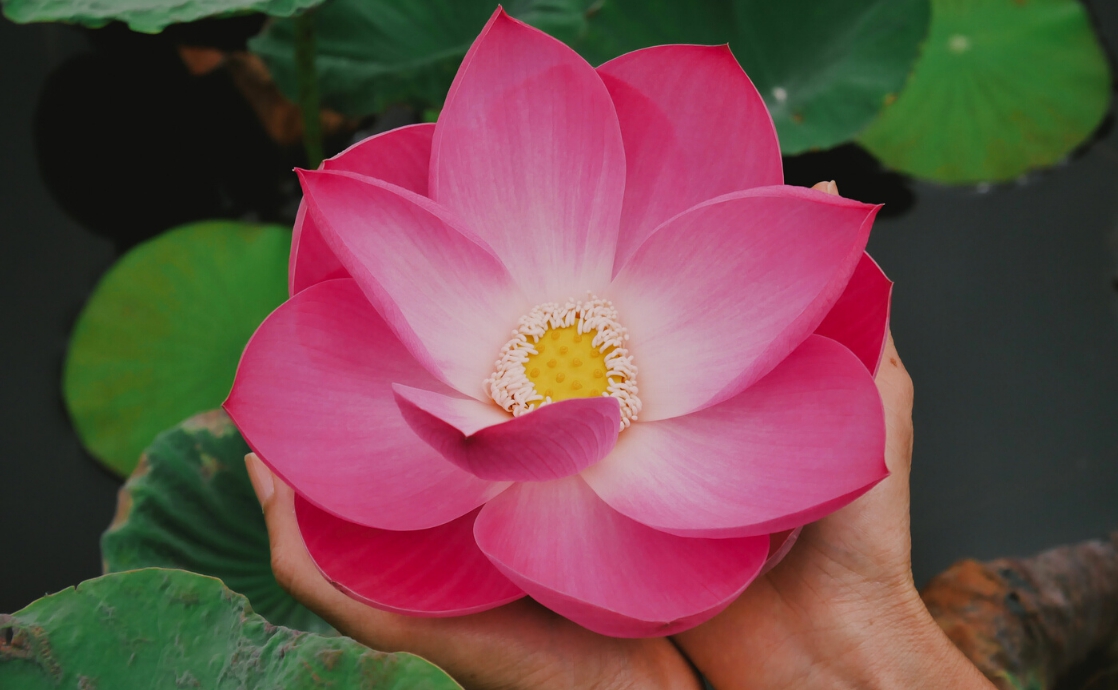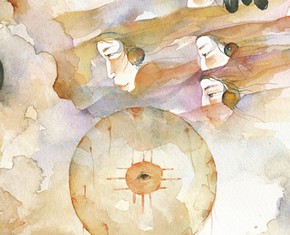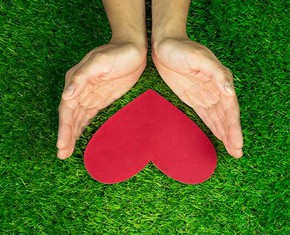The views expressed in our content reflect individual perspectives and do not represent the authoritative views of the Baha'i Faith.
So far in this series of essays, we’ve learned that art helps transform ugliness into beauty – but now, let us look at the rationale for art that emanates from and promotes the beautiful in both our material and spiritual natures.
One Baha’i artist, the composer, producer, writer and speaker Ludwig Tuman, put it this way:
Beauty may be regarded as an attracting quality that radiates from the Manifestations of God, is reflected in all God’s handiwork, and felt in the human heart as a stirring and awakening of love. Beauty then, plays an essential role in aiding man to fulfill the very purpose of his existence: to know and to love God.
RELATED: Art and Justice: The Twin Triggers of Human Transformation
An article by Baha’i writer Keith Ransom-Kehler asserts that:
In the aesthetic experience there is a lavish out-rushing of the soul’s fine gift of response to and recognition of something from which it cannot derive any possible personal benefit …
The very nature of the recognition of beauty requires a complete withdrawal from self, for the first definition of anything beautiful is its freedom from the utilitarian. We can imagine something of the bewildering tempestuous ecstasy that swept through the first soul who discovered that though putting on some ornamentation on his crude earthen vessel did not in any sense increase its usefulness, or enlarge its content, it did release in him new levels of response, new powers of expression, a new hope, a new sensibility, a new vision. The addition of this element or decoration to his utensil could not feed his body, but it performed the more eternal task of nourishing his soul.
It is beauty upon which the spirit feeds, for spirit is limitless and its nutrient can never come from those sordid restrictions that please the impertinent.
A deep sense of pleasure arises from the beauty inherent in much art.
In Mirror of the Divine, Ludwig Tuman explains that beauty not only emanates from God’s chosen messengers, but it in turn becomes an “attracting quality” that brings us closer to God. He calls it a “… spiral of spiritual growth, carried upward on the wings of love toward the Kingdom of the Most Great Beauty.”
When asked by Professor Chris Kavelin for advice in developing a college course on Spirituality and Social Transformation, Aunty Mary Anne Coconut, an Aboriginal elder from Weipa, a remote community in the far north of Australia, shared her wisdom with him:
Well, the first thing is to let the students know that if they have any challenge that’s facing them, anything that they need done in their lives that they don’t feel they can do, that they should go out into nature and find some place that’s beautiful. Find someplace like a beautiful tree and go sit next to that tree. Then say a prayer to God or to their soul, or to whatever their understanding of the ‘Other’ or ‘Spiritual Reality’ is and to ask for help and say, ’This is beyond me. I need assistance.’ Then they should trust that there will be an answer of some kind and that when they feel that answer has arrived they should act on that answer.
In writing about this, Professor Kavelin zeroed in on the prayer aspect, which of course is the crux of her advice. I, however, am struck by the point that supplicants should find a beautiful spot in nature in which to commune with their Maker. She doesn’t elaborate on this point, but it makes perfect sense. Abdu’l-Baha explained that:
It is natural for the heart and spirit to take pleasure and enjoyment in all things that show forth symmetry, harmony, and perfection. For instance, a beautiful house, a well-designed garden, a symmetrical line, a graceful motion, a well-written book, pleasing garments — in fact, all things that have in themselves grace and beauty are pleasing to the heart and spirit …
We should, therefore, endeavor to surround ourselves with beauty. So important is beauty to our spiritual growth that the Baha’i International Teaching Centre wrote:
… an appreciation of beauty is one of the spiritual forces that lifts us to higher realms of existence. To strengthen this power of attraction it is beneficial for the friends to be exposed to various forms of art.
Beauty enhances and enriches the spirit. Have you ever had an artistic experience that moved you to shed tears of utter joy? That’s happened to me at times while listening to Sarah Brightman sing, especially songs of the spirit. An ethereal quality in her voice transports my soul to another realm: it seems to transcend my body and I feel a closeness to God that no other voice has ever accomplished for me.
When standing among the towering redwoods in California or gazing at God’s incredible palette of colors and the unique natural sculptures at Canyon de Chelly and the Grand Canyon in Arizona, watching and listening to the waves crash along the shores of the Pacific Ocean, the rest of the world, all its crises and its busyness, just disappear. That natural beauty immerses me in a sense of well-being. I feel enveloped in the hands of the Creator. In my home, on a smaller yet satisfying scale, I’ve placed beautiful pieces of art. If stresses or worries arise, I focus on one of them and agitation eases. I then feel calm enough to commune with God in prayer or meditation.
RELATED: Why Meditation Is the Key to Spiritual Evolution
These sentiments are more profoundly explained in poetic form, as in Touched by Beauty, whose author remains unknown:
We all want to be touched
by wonderful music, beautiful art,
love of our fellow man.
To be moved, drawn,
taken to places unknown.
To feel an overwhelming chill
from a beautiful orchestral phrase,
to be filled with warmth and joy
from the color of a canvas,
to feel the wonder from
touching the creativity of mankind.
How music, art and poetry
cause such emotion is unknown.
but we all know when we are there—
what a cold world it would be without
the beauty of music, art, poetry and love.
















Comments
Sign in or create an account
Continue with Googleor